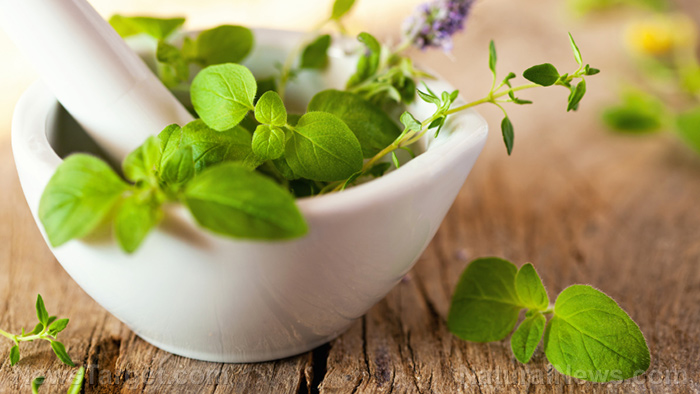Heart-leaved moonseed herb has potential anti-diabetes effects
03/09/2021 / By Evangelyn Rodriguez

Diabetes is one of the fastest-growing diseases in the world today. Together with obesity, many experts consider diabetes to be the biggest epidemic in human history. Recent reports estimate that in 2019, about 9.3 percent of the world’s population, or 463 million people in total, suffered from diabetes. This number is expected to rise to 10.2 percent by 2030. By 2045, about 700 million people are estimated to develop this potentially life-threatening disease.
In clinical practice, diabetes is associated with a variety of symptoms, the most telling of which are elevated fasting and post-prandial (after meal) blood sugar levels. Also known as hyperglycemia, this condition can cause serious damage to vital organs, especially if left untreated.
When excess glucose molecules in the blood attach themselves to proteins — a process called glycation — the resulting products trigger oxidative stress and inflammation. These events lead to the complications commonly associated with diabetes, such as diabetic neuropathy, which affects nerves; diabetic retinopathy, which affects the eyes; diabetic nephropathy, which affects the kidneys; and atherosclerosis, which affects the arteries and is implicated in coronary artery disease.
Because of the dangers caused by hyperglycemia, controlling their blood sugar levels is top priority for diabetics. The manual introduction of insulin — the hormone responsible for inducing glucose uptake by cells — is the most widely used strategy for the management of diabetes. Medications like metformin, which help lower blood sugar levels, are also commonly used.
However, these medications have been found to cause adverse effects, such as hypoglycemia (abnormally low blood sugar), liver problems, L-lactate buildup (lactic acidosis) and diarrhea. Hence, scientific interest in the anti-diabetic and hypoglycemic properties of medicinal plants has increased in recent years.
Plant used in Ayurvedic medicine shows potential for diabetes management
Tinospora cordifolia, commonly known as heart-leaved moonseed, is a medicinal plant used in Ayurvedic and Unani medicine to treat various health problems, such as high cholesterol, cancer and diabetes. In open markets in India, many herbalists sell different parts of heart-leaved moonseed as remedies. Extracts derived from its stem, for instance, are known as anti-diabetic medicine.
Research has found that heart-leaved moonseed is rich in bioactive components, such as alkaloids, steroids, glycosides and polysaccharides. However, many of these compounds are yet to be identified. (Related: Extracts from garlic, white onion and purple onion exert inhibitory effects against enzymes linked to diabetes and hypertension.)
In a recent study published in the International Journal of Green Pharmacy, researchers at Osmania University in India investigated the phytochemical composition and anti-diabetic activities of heart-leaved moonseed. But instead of using the stem, they used an extract obtained from its leaves using methanol as solvent. They then used chromatography to isolate the active compounds present in the methanolic extract.
Characterization of the extract’s components allowed them to identify four active alkaloids, namely, magnoflorine, jatrorrhizine, palmatine and berberine. The researchers then examined the effects of the heart-leaved moonseed extract and magnoflorine in rats with streptozotocin (STZ)-induced diabetes. They specifically looked at the extract and the compound’s ability to inhibit the activity of aldose reductase. This enzyme has been linked to the progression of diabetic complications.
The researchers found that both the heart-leaved moonseed extract and magnoflorine restored serum glucose to normal levels, and was just as efficient as metformin. Both agents also remarkably prevented weight loss to a similar extent as metformin. Additionally, treatment with either the extract or magnoflorine significantly inhibited aldose reductase activity.
Based on these findings, the researchers concluded that heart-leaved moonseed and its active component, magnoflorine, have immense anti-diabetic potential and can be used to manage diabetes.
Sources include:
ClinDiabetesEndo.BiomedCentral.com
DiabetesResearchClinicalPractice.com
GreenPharmacy.info [PDF]
Submit a correction >>
Tagged Under:
alternative medicine, anti-diabetes, diabetes cure, heart-leaved moonseed, herbal medicine, Herbs, natural cures, natural medicine, phytonutrients, plant medicine, remedies, research
This article may contain statements that reflect the opinion of the author
RECENT NEWS & ARTICLES
Herbs.News is a fact-based public education website published by Herbs News Features, LLC.
All content copyright © 2018 by Herbs News Features, LLC.
Contact Us with Tips or Corrections
All trademarks, registered trademarks and servicemarks mentioned on this site are the property of their respective owners.






















